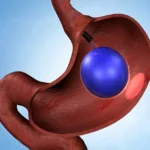Dupixent (Dupilumab) is a targeted therapy used to treat atopic dermatitis, eosinophilic asthma, chronic rhinosinusitis with nasal polyps, and eosinophilic esophagitis. Short-term side effects are well known, however, little is known about Dupixent’s long-term side effects.
Here is a brief overview of Dupixent’s short-term and long-term side effects.
What is Dupixent?
Dupixent is the brand name of Dupilumab. It inhibits IL-4Rα (Interleukin 4 receptor alpha) that mediates the actions of IL-4 and IL-13.
It is an immune modulator that alters the ratio of T-helper cells and cytotoxic T cells activity. It primarily alters the chemical reactions that are involved in the pathogenesis of allergic reactions and inflammation.
Dupixent is FDA-approved for the treatment of the following conditions:
- Atopic dermatitis
- Eosinophilic asthma
- Chronic rhinosinusitis with nasal polyposis
- Eosinophilic esophagitis
What are the short-term side effects of Dupixent?
Most of the side effects of Dupixent are short-lasting. They are usually mild in severity and do not require treatment discontinuation. However, treatment withdrawal can result in rapid clinical improvement.
Some of the short-term side effects that have been reported with Dupixent include:
Injection-site pain:
Since Dupixent is administered into the skin every 2 or 4 weeks, depending on the indication, injection site pain is an expected side effect.
Injection site pain is reported by 14 – 18% of the users.
Some people are scared of needles while the medicine itself can cause pain. Injection site pain also depends on whether you are injecting Dupixent using the syringe or the pen and how fast you inject it.
Injection site allergic reaction
Injection site allergic reaction is different than injection site pain. Although most patients who have injection-site allergic reactions also have injection-site pain.
Allergic reactions at the site of the injection can manifest as redness, swelling, induration, urticaria, and pain.
Most allergic reactions are mild and do not require any treatment, some reactions may be serious.
Up to 6% of the patients may develop allergic reactions at the site of injections.
Nasopharyngitis and upper respiratory tract infections:
It is a non-specific symptom. Patients may have sneezing, nasal discharge, pain in the throat and neck, and a low-grade fever.
It may occur as a result of immune modulation or due to common viral infections that can occur at an increased frequency in patients on Dupixent.
Most patients who develop upper respiratory tract symptoms do not need any treatment. OTC antiallergics like cetirizine help most patients who have nasopharyngitis.
Conjunctivitis:
Eye-related side effects are more common in patients who are treated for atopic dermatitis (Eczema).
Conjunctivitis is a self-resolving side effect that may not need any treatment.
Conjunctivitis and eye itching are reported by about 10% of the patients who are in Dupixent treatment.
Gastritis:
Gastritis, heartburn and GERD-like symptoms are not very common but have been reported by about 2% of patients using Dupixent.
The use of OTC antacids is usually sufficient to treat gastritis and GERD.
Lack of sleep:
- Dupixent can cause sleep disturbances in some patients. Insomnia or lack of sleep has been reported by patients usually on the day of the injection.
- The exact mechanism of insomnia is not known.
Toothache:
- Toothache has also been reported in a greater number of patients using Dupixent compared to placebo.
- The mechanism underlying toothache is not known.
Dupixent long-term side effects:
The long-term side effects of Dupixent (Dupilumab) are those that may bother the person for a long time after Dupixent use has been discontinued.
Usually, long-term side effects may last for weeks to months after Dupixent use has been discontinued.
Eye-related side effects:
Although most eye-related side effects are mild and transient. Some eye-related side effects may persist for a longer period even after Dupixent treatment has been discontinued.
Keratitis is a side effect associated with Dupixent, especially in those patients who are getting it for the treatment of atopic dermatitis.
Keratitis is an inflammation of the cornea. The cornea is the outer sensitive part of the eye.
Keratitis can cause severe pain, and if not treated promptly, it can lead to reduced visual acuity and blindness.
Keratitis should be suspected in a person who develops eye pain and photosensitivity.
It is important to exclude any infectious cause of keratitis, and if identified should be treated with antibiotics or antiviral medications.
Topical corticosteroids may be used along with eye-lubricating drops and anti-inflammatory drugs, after withholding Dupixent.
Fatigue and Tiredness:
Fatigue and tiredness have been reported very rarely by patients on long-term Dupixent.
Although with an improvement in the symptoms of asthma and nasal polyps, most patients reported an improvement in the symptoms of fatigue and tiredness.
Parasitic infections and other chronic infections:
Parasitic and other chronic infections are more common in patients who are on long-term Dupixent.
Because Dupixent (Dupilumab) depletes the chemical mediators involved in clearing parasitic infections such as eosinophils and histamine, long-term use of Dupixent may hinder the clearance of these infections from the body.
Antihelminthics like mebendazole and albendazole can be given to treat parasitic infections, however, treatment interruption may be required in treatment-resistant cases.
Dupixent use and vasculitis:
Although vasculitis is not a side effect of Dupixent, people with asthma who are on corticosteroids may not need them anymore because of improvement in their symptoms.
Once the corticosteroids are discontinued, this may unmask an underlying vasculitis.
It is recommended to taper corticosteroids gradually and after consultation with your physician.
Joint pains and myalgias:
Joint pains, myalgias (muscle pain), joint swelling, joint tenderness, and redness have been reported in the post-marketing side effects of Dupixent.
Arthritis, Myalgias, tendinitis, and tenosynovitis have been reported with Dupixent use.
These side effects may improve with treatment discontinuation. However, in some cases, these side effects may persist and require long-term management.
Patients may need anti-inflammatory drugs or oral corticosteroids.
Diabetes
One of the serious long-term side effects of Dupixent is its association with diabetes. Diabetes has been reported in various case reports.
Dupixent depletes T-helper cells. It alters the ratio of T-helper and cytotoxic T cells, which makes a person prone to developing diabetes.
Weight gain:
Weight gain has not been mentioned as a long-term side effect of Dupixent, however, self-reported side effects of Dupixent users and some small studies have associated weight gain with the use of Dupixent.
Of individuals who reported weight gain or weight loss as a side effect on social media, more than half had weight gain.
The average weight gain reported by patients on social media was estimated to be around 13 pounds.
Cardiovascular events, including non-fatal Myocardial infarction, strokes, and thromboembolic events:
Cardiovascular safety is one of the major clinical outcomes to assess the safety of any drug. In fact, the FDA does not approve any drug before it is shown to be safe for the heart.
The cardiac events associated with Dupixent were assessed in individuals who were on long-term treatment using Dupixent injections.
The number of cardiac events with long-term Dupixent use is summarized in the table below:
Dupixent long-term use (Duration) | Dupixent 200 mg every 2 weeks | Dupixent 300 mg every 2 weeks | Dupixent 300 mg every weeks | Placebo |
| Dupixent use for one year in patients with Asthma | 1 (0.2%) | 4 (o.6%) | – | 2 (0.3%) |
| Dupixent use for one year in patients with Atopic Dermatitis (+ TCS) | – | 1 (0.9%) | 0 (0%) | 1 (0.3%) |
In patients who were on long-term Dupixent for the treatment of chronic rhinosinusitis with nasal polyposis, no cardiovascular events were reported after one year, while only one case of a cardiovascular event was reported after two years of Dupixent use.
Cardiovascular events are usually irreversible, and hence,e from the above discussion, it can be concluded that Dupixent is very safe in terms of cardiovascular safety.
Cancer
Cancer is not a reported side effect of Dupixent, unlike Omalizumab (Xolair). However, a phase IV study has shown some association of Dupixent with testicular cancer.
- Premium Ingredients: Our tea blend features high-quality Berberine, aromatic Oolong, and refreshing Mint, all organicall…
- Mint Flavored: Enjoy the cool, crisp taste of mint that perfectly complements the robust flavors of Berberine and Oolong…
- Unsweetened with Zero Calories: Crafted for those who appreciate the natural flavors of tea, our blend is completely uns…
- PATENTED TECHNOLOGY – Intake is a patented two-part nasal dilator system that features two independent nasal strips (Tab…
- COMFORTABLE & DURABLE – Unlike classic nasal strips for snoring, the Intake relief band is worn externally and provides …
- REDUCES SNORING – Intake is a safe and effective device to increase oxygen intake and help relieve nasal congestion. Red…
- COMFORTABLE & ADJUSTABLE – SmartGuard’s Anti-Snore mouthpiece is extremely comfortable for both men and women. Unlike ot…
- EFFECTIVE SOLUTION – Unlike chin straps, nasal strips, snore pillows, and other devices, SmartGuard works. Backed by sci…
- EASY TO USE – SmartGuard’s snore stopper guard is easy to use and can be molded in 10-20 minutes. We provide printed ins…







